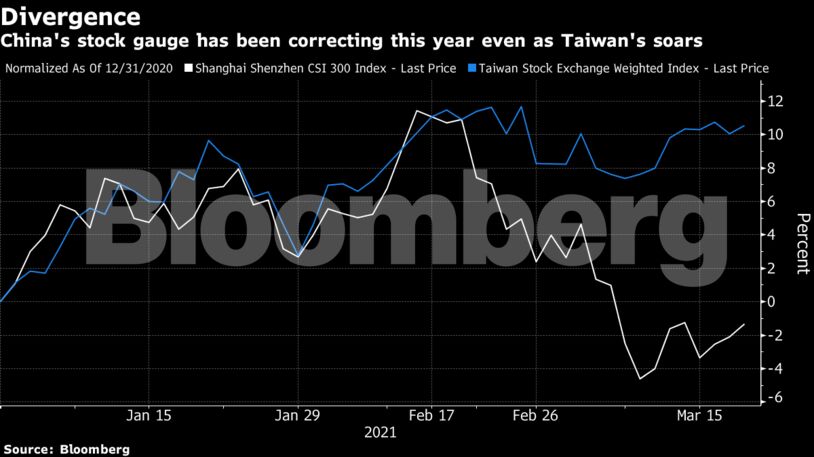The yuan, stocks in China and Taiwan and corn prices are among areas of focus. The talks began Thursday and descended quickly into bickering and recriminations over human rights, trade and international alliances, suggesting a detente will be hard to achieve.
“Markets are likely to look for upside headlines,” Michael Every, Rabobank’s global strategist, wrote in a note. “Yet the underlying dynamic does not run in that direction at all.”
China’s benchmark CSI 300 stock index slid Friday, extending a recent tumble, as the complexities around the talks added to a sour investor mood. Here’s a look at some key gauges amid the discussions:
Stocks

China’s market is down more than 10% from a February peak and may be sensitive to the outcome of the dialog. “Even a slightly sharper tone could be taken as negative news,” said Wenbien Shi, an analyst at Yuanta Securities.
While equities in Taiwan are among Asia’s top performers this year, the island is a source of U.S-China tension too.
The Yuan

The U.S.-China trade war caused the yuan to plunge in August 2019 to its weakest level in a decade. Lately the yuan has been rising as China rebounded from the pandemic. The recent close performance alignment of the yuan and the Taiwan dollar suggests turbulence in the former could spill into the latter.
This first set of talks is unlikely to result “in any important agreement” and any plans to extend them could keep the yuan volatile, said Ken Cheung, chief Asia currency strategist at Mizuho Bank Ltd.
Commodities

Traders will be monitoring whether China decides to buy more corn, a key U.S. export. More large purchases are possible because of strong demand from the refining industry as well as feed mills, according to Meng Jinhui, a senior analyst with Shengda Futures in Beijing.
Clean Energy

One of the possibly few points of agreement in Alaska may be a willingness to collaborate on fighting climate change. Chinese solar stocks could be sensitive to any breakthroughs — or, on the flip side, to fractious comments over Xinjiang, amid allegations of forced labor in the region’s solar and cotton industries.
Trade Uncertainty

A gauge of U.S. trade policy uncertainty has fallen back to pre-trade war lows ahead of the talks. That’s a sign that the market is too complacent given the underlying disputes between the U.S. and China, according to Laura Cooper, a macro strategist who writes for Bloomberg.


















 Become an Insider
Become an Insider
Comments - Please login in order to comment.